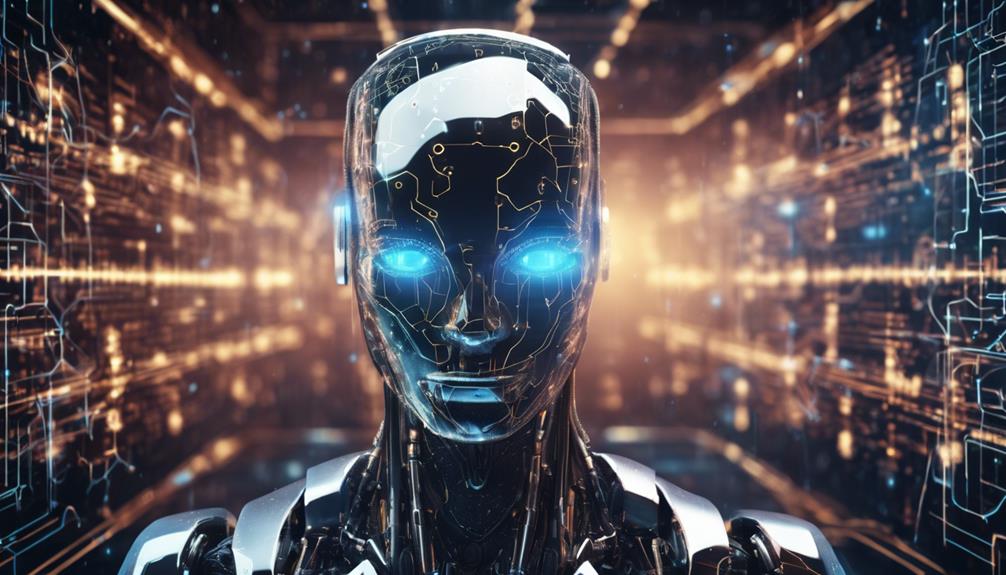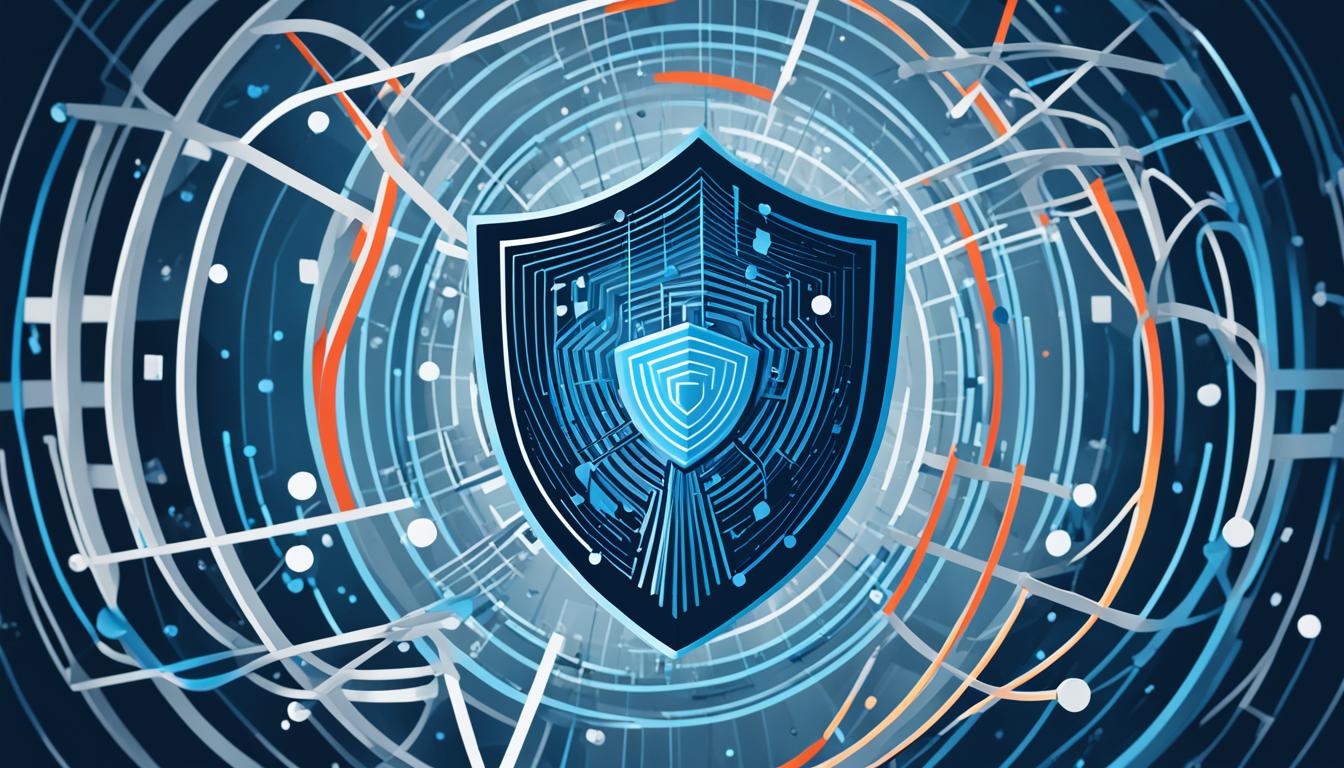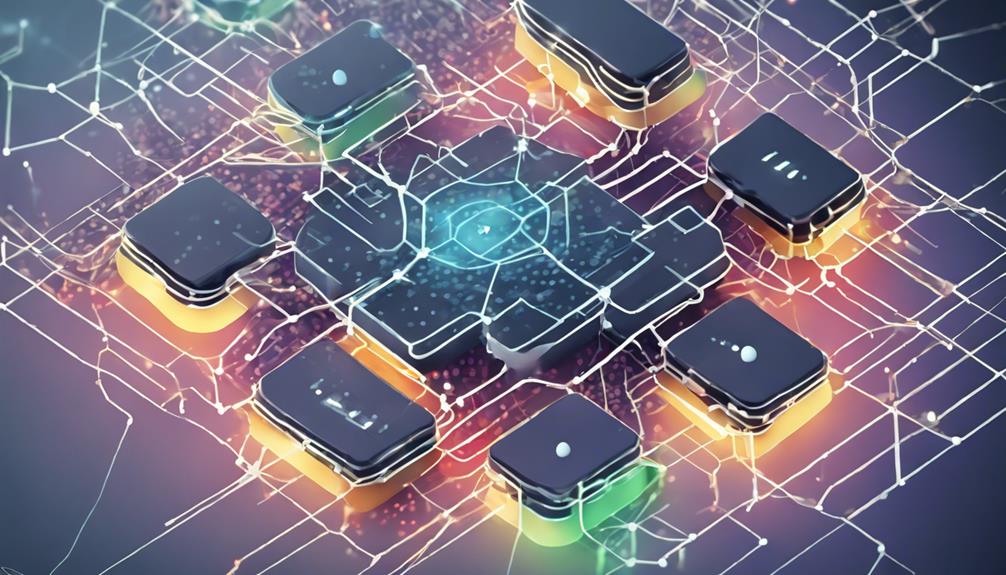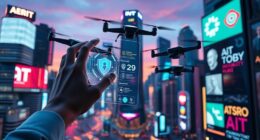Generative cybersecurity AI represents the future of cyber defense, offering advanced threat detection, real-time incident response, and proactive defense mechanisms. By leveraging generative AI, organizations can fortify their security tools, automate threat response processes, and enhance operational efficiency. This technology empowers security teams to adapt swiftly to evolving threats, ensuring a resilient cybersecurity posture. With a focus on strategic threat intelligence analysis and proactive defense strategies, generative AI is revolutionizing how cybersecurity professionals safeguard systems and data. Embracing this innovative approach is key to staying ahead of cyber threats and maintaining robust security defenses for the future.
Key Takeaways
- Revolutionizing cybersecurity with advanced generative AI technologies.
- Enhancing threat detection and response capabilities.
- Bridging security defense gaps and fortifying data protection.
- Empowering organizations with proactive defense strategies.
- Driving efficiency and resilience against evolving cyber threats.
Growth of Generative AI in Cybersecurity
With the rapid advancement and increasing adoption of generative AI technologies, the cybersecurity landscape is experiencing a significant transformation. Generative AI tools are revolutionizing the way organizations approach cybersecurity strategies.
As projected, a 30% increase in the adoption of generative AI across industries by 2024 indicates the growing reliance on AI for enhancing security measures.
Experts from Vectra AI foresee a substantial impact of generative AI on cybersecurity, particularly in eroding the effectiveness of email security and exposing defense gaps. Cybercriminals are expected to leverage generative AI to craft more sophisticated phishing lures, posing new challenges for cybersecurity professionals.
In response to these emerging threats, organizations are shifting towards downstream security approaches like Zero Trust. This proactive strategy aligns with the evolving landscape of cybersecurity, emphasizing continuous verification and strict access controls to mitigate risks associated with generative AI advancements.
Adaptation and integration of AI-driven solutions into cybersecurity frameworks are becoming essential to stay ahead in the ever-evolving threat landscape.
Impact on Security Tools
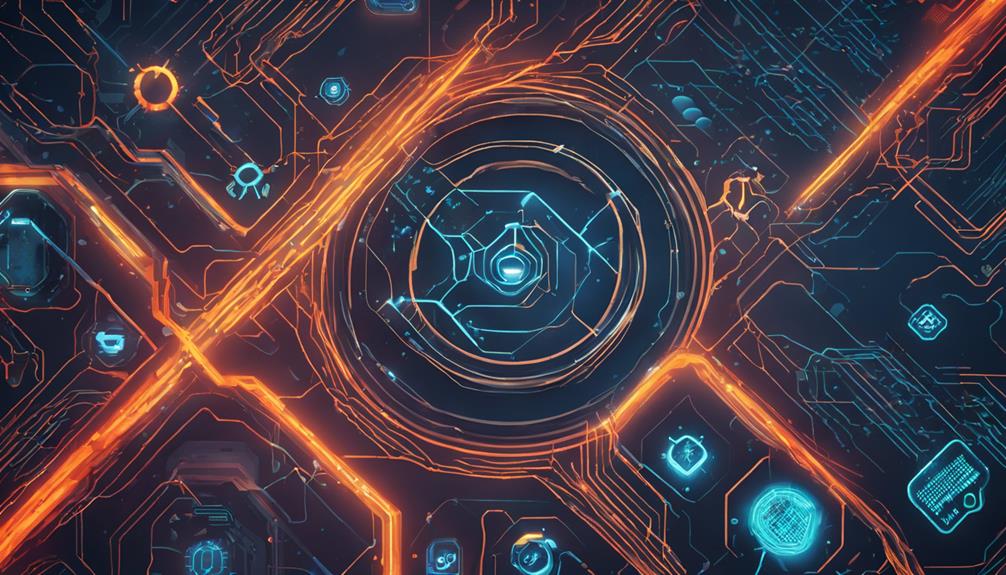
Revolutionizing security tools, generative cybersecurity AI automates threat detection and response processes, providing real-time observability into user and model behavior for enhanced security monitoring. This advancement in AI security offers a multitude of benefits:
- Enhanced Threat Detection: By leveraging generative AI, security tools can swiftly identify and analyze potential threats, enabling proactive responses to mitigate risks effectively.
- Improved Incident Response: With real-time observability into user and model behavior, organizations can respond promptly to security incidents, minimizing the impact of breaches on data security.
- Efficient Security Management: Centralized security control planes with policy-based access controls streamline security management processes, allowing organizations to optimize their defenses efficiently.
Generative cybersecurity AI empowers organizations to fortify their data security measures by harnessing the capabilities of AI-driven tools, thereby ensuring a robust defense against evolving cyber threats.
Transformation of Security Operations
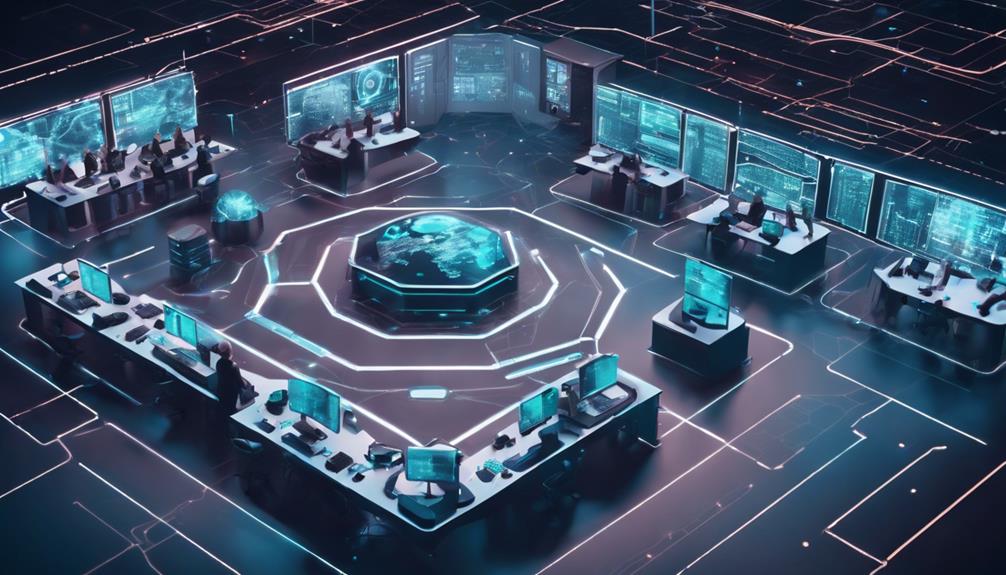
The transformation of security operations through generative cybersecurity AI brings about significant enhancements in operational efficiency.
By automating threat response processes, security teams can focus on strategic threat intelligence analysis.
This adaptive approach enables the development of proactive defense strategies to combat evolving cyber threats effectively.
Operational Efficiency Enhancement
Generative cybersecurity AI revolutionizes security operations by streamlining processes and optimizing resource utilization. This transformation is evident in several key aspects:
- Automated Routine Tasks:
AI algorithms handle mundane security tasks, freeing up human analysts to focus on more complex threats.
- Real-Time Threat Detection:
Through continuous monitoring of data streams, AI-enabled security tools can swiftly identify and respond to potential threats.
- Optimized Incident Response:
Automation in Threat Response
Automation in threat response within cybersecurity operations has greatly enhanced the efficiency and effectiveness of security teams. By utilizing generative AI models, security teams can now swiftly detect and respond to security threats in real-time. This transformation of security operations has revolutionized the way incidents are handled, enabling automated incident response and quicker identification of potential risks.
The power of generative AI in automating threat response not only reduces manual intervention but also improves response times substantially, ultimately bolstering the overall cybersecurity posture of organizations.
Security teams leveraging automation in threat response are better equipped to mitigate security incidents promptly, thanks to the advanced capabilities of generative AI. This technology allows for continuous monitoring, analysis, and remediation of threats, ensuring a proactive approach to cybersecurity.
With automated threat response mechanisms in place, security teams can focus on strategic initiatives and proactive measures to stay ahead of evolving threats in the digital landscape.
Adaptive Defense Strategies
Adaptive defense strategies revolutionize security operations by harnessing the power of generative AI to enhance threat detection capabilities and proactively respond to evolving cyber threats. These strategies involve real-time analysis of user and model behavior, optimizing security measures to stay ahead of potential breaches.
By providing full visibility into user actions and model performance, adaptive defense strategies enable proactive responses to security threats before they escalate. Leveraging advanced AI technologies, organizations can adapt to the ever-changing cyber landscape, ensuring the protection of sensitive data and enhancing overall security posture.
- Enhancing threat detection capabilities through real-time analysis
- Proactively responding to evolving cyber threats
- Providing full visibility into user actions and model performance
Through the integration of generative AI in security operations, adaptive defense strategies offer a dynamic approach to safeguarding sensitive data and fortifying cybersecurity defenses against sophisticated threats.
Challenges in Social Engineering Attacks

The rise of generative AI in social engineering attacks presents significant challenges for organizations aiming to maintain robust cybersecurity defenses. Cybercriminals are now using generative AI to craft sophisticated phishing emails that can bypass traditional security measures, making it harder for organizations to detect and prevent these attacks.
In response, employee education on recognizing phishing attempts becomes vital to bolster security defenses. By training staff to be vigilant and cautious when interacting with emails, organizations can mitigate the risks posed by generative AI-driven social engineering attacks.
Moreover, organizations are increasingly turning towards innovative security defense strategies like Zero Trust and micro-segmentation to counter the evolving threat landscape. These downstream security approaches offer a proactive defense mechanism against the advanced tactics employed by cybercriminals utilizing generative AI.
As the utilization of generative AI in social engineering attacks continues to grow, it becomes imperative for organizations to enhance their cybersecurity practices and stay ahead of malicious actors leveraging this technology.
Rise of Deep Fakes

The exponential growth of deep fakes, powered by generative AI technology, poses a formidable threat to cybersecurity defenses worldwide. Deep fakes, created using advanced generative AI algorithms, have become highly convincing manipulated media, including videos and audio, that can deceive even keen observers. This technology enables malicious actors to craft realistic content that blurs the lines between reality and fabrication, challenging traditional methods of verification.
- Unprecedented Realism: Deep fakes exhibit unparalleled realism, making it challenging to discern between genuine and fabricated content.
- Increased Vulnerability: Cybersecurity defenses are increasingly vulnerable to attacks utilizing deep fakes due to their sophistication and ability to manipulate perceptions.
- Heightened Risks: The proliferation of deep fakes raises significant cybersecurity, privacy, and trust concerns in the digital landscape, necessitating proactive defense strategies.
Addressing the rise of deep fakes requires a holistic cybersecurity approach that integrates cutting-edge technologies to detect and mitigate these AI-driven threats effectively.
Importance of Zero Trust Approach

Emphasizing the criticality of a Zero Trust approach in cybersecurity underscores the need for rigorous network access verification and security measures. This approach operates on the premise that all users and devices, both inside and outside the network perimeter, should not be inherently trusted. By assuming this stance, Zero Trust focuses on continuous verification and strict access controls to prevent unauthorized lateral movement of cyber threats within the network. Implementing Zero Trust can greatly enhance security resilience and mitigate threats effectively.
With the rise of sophisticated cyber attacks, artificial intelligence (AI) plays a pivotal role in bolstering Zero Trust strategies. AI can analyze vast amounts of data to detect anomalies, identify potential risks, and automate responses in real-time, aligning perfectly with the dynamic nature of Zero Trust principles. By integrating AI into Zero Trust frameworks, organizations can fortify their defenses and stay ahead of emerging security challenges.
Role of Micro-segmentation
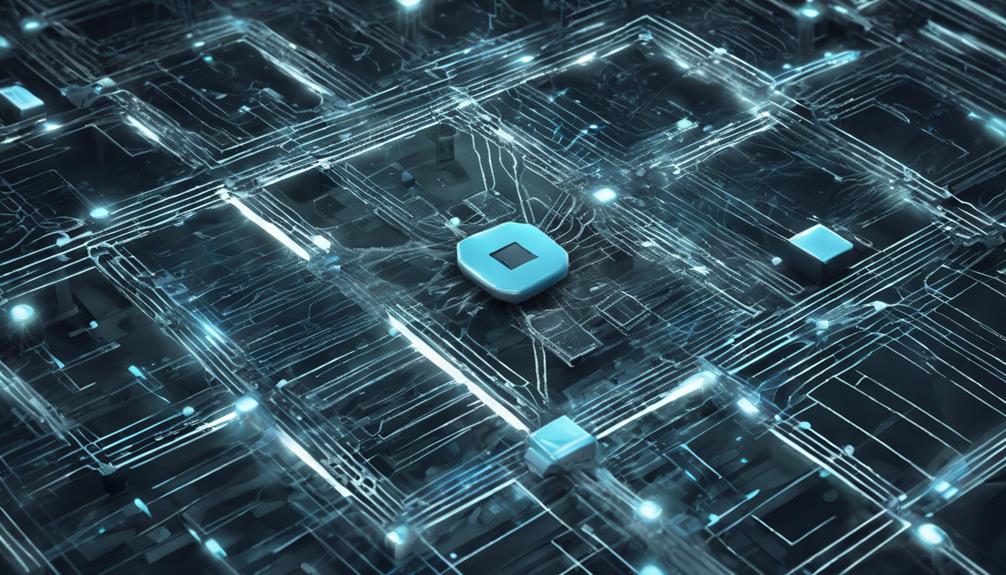
Micro-segmentation strategically enhances network security by dividing the network into smaller, more manageable segments. This approach plays an essential role in fortifying network defenses by reducing the attack surface and preventing lateral movement of threats.
Here are some key benefits of implementing micro-segmentation:
- Tailored Security Policies: Each segment can have customized security policies based on specific requirements, ensuring a more targeted and effective defense strategy.
- Reduced Attack Surface: By breaking the network into smaller segments, the overall attack surface is minimized, making it harder for cyber attackers to move laterally and compromising the entire network.
- Granular Control: Micro-segmentation provides granular control over network traffic, allowing for precise monitoring and enforcement of security policies at a more detailed level.
Evolution of Security Defense Strategies
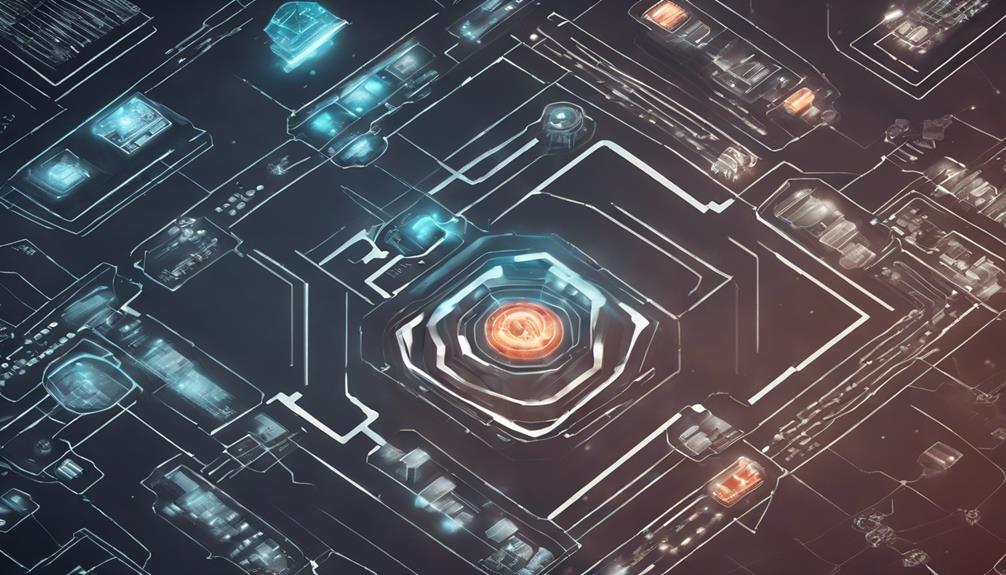
Enhanced by generative AI technology, modern security defense strategies are undergoing a significant evolution in the cybersecurity landscape. The rise of generative AI, particularly large language models (LLMs), has revolutionized how security professionals approach safeguarding systems and data.
Tools like Microsoft's Security Co-Pilot exemplify the potential of AI in automating security tasks, thereby boosting efficiency and freeing up valuable human resources for more critical decision-making processes.
Despite the slow adoption of AI in cybersecurity stemming from a lack of understanding and trust in the technology, the benefits are becoming increasingly clear. Generative AI is not only bridging the skills gap in the cybersecurity industry by addressing workforce shortages but is also providing essential training and guidance to security professionals.
Resilience Against Cyber Threats

In the domain of cybersecurity, maintaining resilience against a constantly evolving array of cyber threats is paramount for safeguarding sensitive data and systems. With the rapid advancements in AI systems, organizations now have powerful tools at their disposal to bolster their defenses.
Here are three key ways AI enhances resilience:
- Advanced Threat Detection: AI-driven platforms like Vectra's Security AI offer cutting-edge capabilities in detecting and mitigating cyber threats before they cause harm.
- Supply Chain Protection: AI tools play an essential role in monitoring and securing complex supply chains, ensuring that vulnerabilities are identified and addressed promptly.
- Mitigating Data Breaches: Generative AI's ability to automate security tasks helps organizations respond swiftly to potential data breaches, minimizing the impact and enhancing overall resilience.
Frequently Asked Questions
What Is the Future of Generative AI in Cybersecurity?
The future of generative AI in cybersecurity holds promise and challenges. As adoption increases, organizations must prepare for sophisticated threats like deep fakes and advanced phishing attempts. Implementing strong security measures is essential for safeguarding against evolving cyber risks.
Will Cybersecurity Be Replaced by Ai?
Cybersecurity will not be replaced by AI but rather augmented. AI enhances threat detection, automates tasks, and allows professionals to focus on strategic decisions. The combination of human expertise and AI algorithms is essential for robust defenses.
What Are the Future Predictions for Generative Ai?
Future predictions for generative AI include increased adoption across industries, revolutionizing cybersecurity with sophisticated capabilities. As intelligent AI and machine learning evolve, cybercriminals are expected to leverage generative AI for advanced phishing tactics, emphasizing the need for robust cybersecurity measures.
What Is Generative AI in Banking 2024?
Generative AI in banking in 2024 is anticipated to revolutionize core operations, driving innovation, efficiency, and customer experience enhancements. The integration of Generative AI is poised to bring transformative changes, reshaping the core banking landscape.
Conclusion
In summary, the growth of generative AI in cybersecurity is revolutionizing security tools and operations, enhancing defense strategies against cyber threats.
With the rise of deep fakes and challenges in social engineering attacks, adopting a zero trust approach and implementing micro-segmentation are essential for resilience.
One statistic to bear in mind is that cybercrime damages are projected to cost the world $6 trillion annually by 2021, emphasizing the urgent need for advanced cybersecurity solutions.


